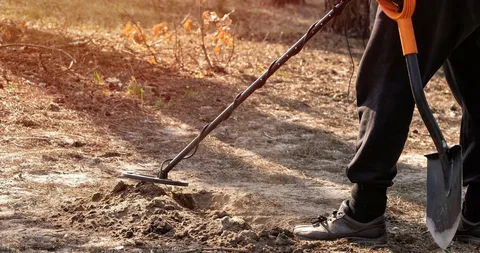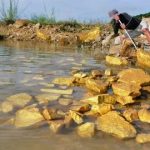Gold mining and processing are crucial components of the global economy, with the demand for this precious metal continuously on the rise. In order to meet this demand, it is essential to streamline the processes involved in gold mining and processing to ensure maximum efficiency. This not only benefits companies in terms of cost reduction and increased productivity but also has positive implications for the environment and communities surrounding mining operations. In this article, we will explore the various ways in which gold mining and processing can be optimized for maximum efficiency.
Streamlining gold mining and processing for maximum efficiency involves optimizing every step of the process. This can include improving exploration techniques to locate gold deposits, utilizing advanced mining equipment and techniques to extract ore from the ground, and implementing efficient processing methods to extract the gold from the ore. By streamlining each stage of the process, companies can minimize waste, reduce costs, and increase overall productivity. This can ultimately lead to higher profits and more sustainable mining operations.
The History of Gold Mining and Processing

Gold mining and processing have been integral to human civilization for thousands of years. The earliest evidence of gold mining dates back to around 7000 years ago in ancient Egypt. Gold was highly valued for its beauty and rarity, and it was used for making jewelry, decorative items, and as a form of currency.
The process of gold mining involves extracting gold ore from the earth and processing it to extract the gold. This process has evolved over time, with the development of more advanced techniques and technologies. In the early days of gold mining, simple methods such as panning and sluicing were used to separate gold from the surrounding rock and sediment. As mining technology advanced, more efficient methods such as hydraulic mining and dredging were employed.
Today, gold mining and processing involve a complex and sophisticated process that includes drilling, blasting, crushing, and chemical processing to extract the gold from the ore. Once the gold is extracted, it is refined and processed to remove impurities and create pure gold bars or other forms of gold products.
Gold mining has had a significant impact on the environment and has been a source of controversy and conflict in many parts of the world. The use of toxic chemicals such as cyanide in the extraction process, as well as the destruction of natural habitats and ecosystems, has raised concerns about the environmental and social impact of gold mining.
Despite these concerns, gold mining continues to be a thriving industry, with an estimated 190,000 metric tons of gold mined throughout history. The discovery of new deposits and the advancement of technology continue to drive the industry forward, ensuring that gold will remain a valuable and sought-after resource for the foreseeable future.
The Environmental Impact of Gold Mining and Processing

Gold mining and processing can have a significant impact on the environment. The use of toxic chemicals such as cyanide and mercury in the extraction and processing of gold can result in water and soil contamination. This in turn can harm plant and animal life and affect the health of surrounding communities.
Deforestation and habitat destruction are also common outcomes of gold mining, as large areas of land are cleared to make way for mining operations. This can disrupt local ecosystems and lead to the loss of biodiversity.
Furthermore, the energy-intensive nature of gold mining and processing contributes to greenhouse gas emissions, which can exacerbate climate change.
Proper management and regulation of gold mining activities are essential to mitigate these environmental impacts. This includes the implementation of sustainable mining practices, the use of alternative, less harmful chemicals in gold processing, and the restoration of mined land to minimize long-term environmental damage.
The Modern Techniques of Gold Mining and Processing

Modern techniques of gold mining and processing include the use of advanced machinery and equipment such as excavators, bulldozers, crushers, and concentrators to extract and process the gold ore. These processes often involve the use of cyanide leaching and carbon-in-pulp technology to separate the gold from the ore. Additionally, advanced technologies such as gravity separation, flotation, and electro-winning are utilized to further refine and extract gold from the ore. These modern techniques have significantly improved the efficiency and effectiveness of gold mining and processing operations.
The Global Economics of Gold Mining and Processing

The global economics of gold mining and processing encompass a wide range of factors, including the cost of exploration, extraction, and processing, as well as fluctuations in gold prices and market demand. Gold mining involves significant capital investment in equipment and labor, as well as ongoing operational costs such as energy, water, and maintenance. Additionally, the efficiency of processing methods and the environmental impact of mining activities can also impact the economics of gold production. Furthermore, geopolitical factors, government regulations, and currency exchange rates can all influence the global economics of gold mining and processing. Overall, the economics of gold mining and processing are complex and multifaceted, with numerous variables impacting the cost, profitability, and sustainability of gold production.
The Importance of Sustainability in Gold Mining and Processing
Sustainability in gold mining and processing is crucial for ensuring the long-term health and viability of both the environment and the industry itself. Gold mining can have significant environmental impacts, such as habitat destruction, soil erosion, and water pollution. Sustainable practices aim to minimize these impacts by employing responsible mining techniques, using less water, and reducing energy consumption.
In addition to environmental concerns, sustainability in gold mining also addresses social and economic aspects. Responsible mining practices include prioritizing the health and safety of workers, respecting local communities, and contributing to local economies in a positive way. This can help to minimize social conflicts and promote long-term economic development in mining regions.
Furthermore, sustainable processing of gold involves minimizing the use of harmful chemicals and reducing emissions of greenhouse gases. This is achieved through the use of cleaner technologies and processes, as well as by promoting efficient recycling and reclamation practices.
Overall, the importance of sustainability in gold mining and processing cannot be overstated. By adopting sustainable practices, the industry can minimize its environmental and social impacts, ensure the well-being of local communities, and contribute to a more sustainable global economy.
The Challenges of Gold Mining and Processing in Remote Areas
The challenges of gold mining and processing in remote areas include the lack of infrastructure such as roads, housing, and access to social services. Additionally, remote areas often have limited access to skilled labor and machinery, as well as difficulties in transporting equipment and supplies to the site. Environmental and social impacts of mining, such as deforestation, water pollution, and displacement of indigenous communities, are also significant challenges in remote areas. Finally, security concerns and the potential for illegal mining activities add to the complexity of operating in remote gold mining locations.
The Role of Technology in Gold Mining and Processing
The role of technology in gold mining and processing is essential for improving efficiency, safety, and environmental sustainability in the industry. Advanced technologies such as 3D modeling, drone and satellite imaging, and robotic mining equipment have allowed for more accurate exploration and extraction of gold deposits. Additionally, advancements in processing technologies, such as cyanide-free methods and automated sorting and grinding systems, have contributed to higher recovery rates and reduced environmental impact. Furthermore, the use of digital platforms and data analytics has improved operational management and decision-making in gold mining and processing operations. Overall, technology plays a crucial role in driving innovation and driving the gold mining and processing industry forward.
The Impact of Gold Mining and Processing on Local Communities
Gold mining and processing can have a significant impact on local communities. The excavation and processing of gold can lead to environmental degradation, including deforestation, soil erosion, and water pollution. This can harm local ecosystems and disrupt the livelihoods of nearby communities. Additionally, the use of toxic chemicals such as cyanide in the extraction process can contaminate local water sources and pose health risks to residents.
Furthermore, the influx of mining operations can bring about social and economic changes in local communities. This may include an increase in population, strained infrastructure, and competition for resources. In some cases, mining activities can lead to land dispossession and displacement of indigenous peoples from their ancestral lands.
On the other hand, gold mining can also bring benefits to local communities, such as employment opportunities and infrastructure development. However, it is essential to address the potential negative impacts and ensure that local communities are involved in decision-making processes and benefit from the wealth generated by mining activities. Sustainable and responsible mining practices, as well as effective environmental and social safeguards, are crucial to minimizing the adverse effects of gold mining and processing on local communities.
The Future of Gold Mining and Processing
See also: gold detector price
The future of gold mining and processing is likely to be influenced by technological advancements and environmental considerations. The industry is expected to become more automated and efficient through the use of advanced machinery and data analytics. This will not only increase productivity but also improve safety for workers.
In addition, there is a growing focus on sustainable and responsible mining practices. This includes reducing the environmental impact of operations, as well as ensuring fair labor practices and community engagement. As consumer demand for ethically sourced gold continues to rise, mining companies will likely be under pressure to meet these standards.
Furthermore, the exploration and extraction of gold may also shift to unconventional sources such as deep-sea mining or mining in space. These developments present new opportunities and challenges for the industry.
Overall, the future of gold mining and processing is expected to be shaped by a combination of technological innovation, environmental consciousness, and shifting sources of supply.
The Regulations and Legalities of Gold Mining and Processing
Gold mining and processing are subject to various regulations and legalities, which vary by country and region. These regulations may cover environmental protection, land use, occupational safety, community relations, taxation, and export/import laws. Additionally, there may be specific regulations regarding the use of chemicals, waste disposal, and land reclamation. It is important for gold mining companies to adhere to these regulations to ensure sustainable and responsible mining practices. Failure to comply with these regulations can result in fines, legal action, and the revocation of mining permits. Therefore, it is essential for mining companies to thoroughly understand and comply with the regulations and legalities governing gold mining and processing in their respective areas of operation.









